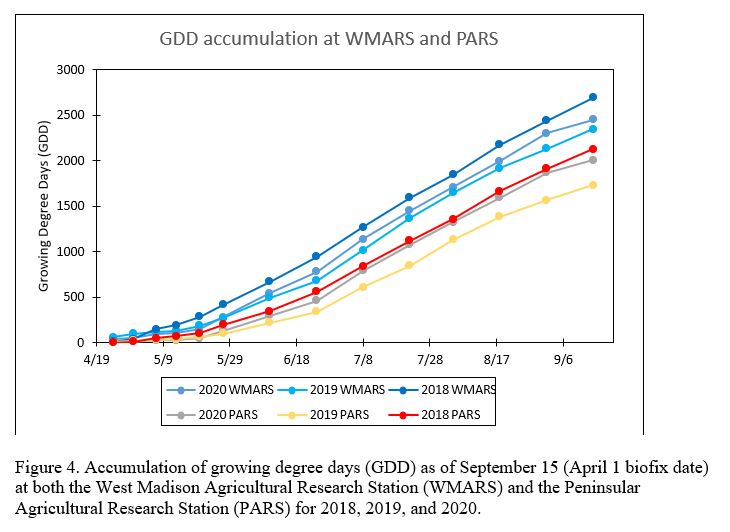Grape Cultivar Developmental Stages: September 15, 2020
Correction to note: The titratable acidity value for Frontenac from September 1 was corrected from 9.6 to 19.9 g/L tartaric acid equivalence in Table 1 and Figure 2, as well as related sentences, in the last report.
Phenology
At the West Madison Agricultural Research Station (WMARS) in Madison, WI, harvesting continues along the following schedule:
Brianna and Itasca: September 4
La Crescent: September 11
Crimson Pearl and Petite Pearl: September 15
Marquette: September 18
Frontenac: TBD
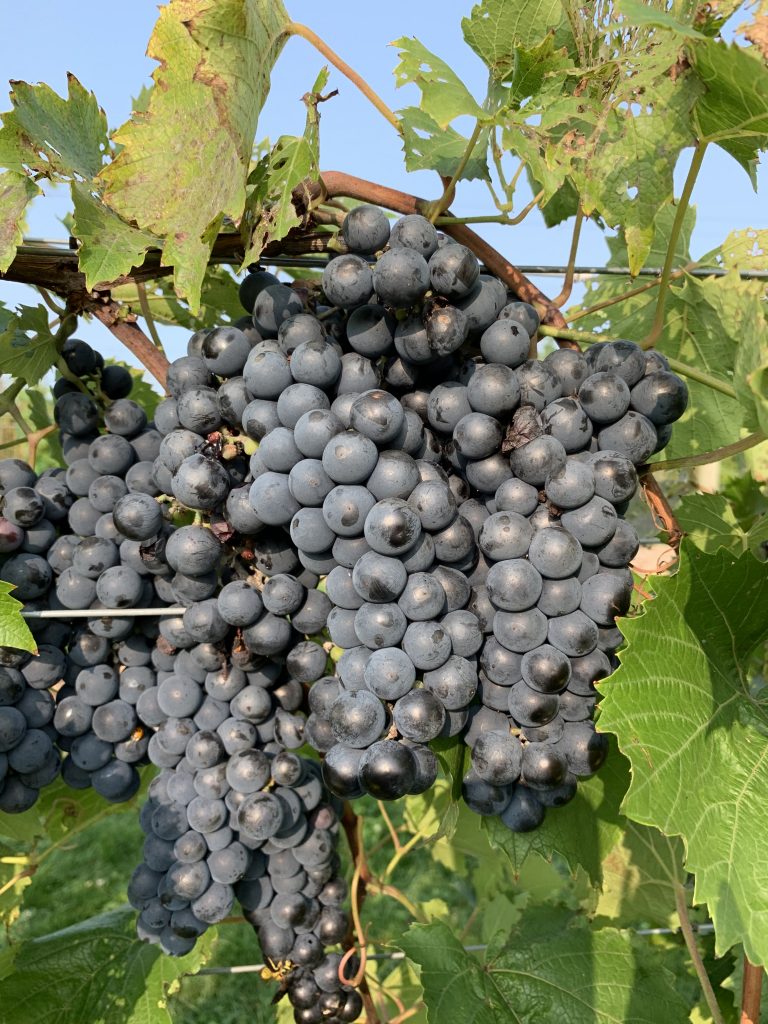
Crimson Pearl 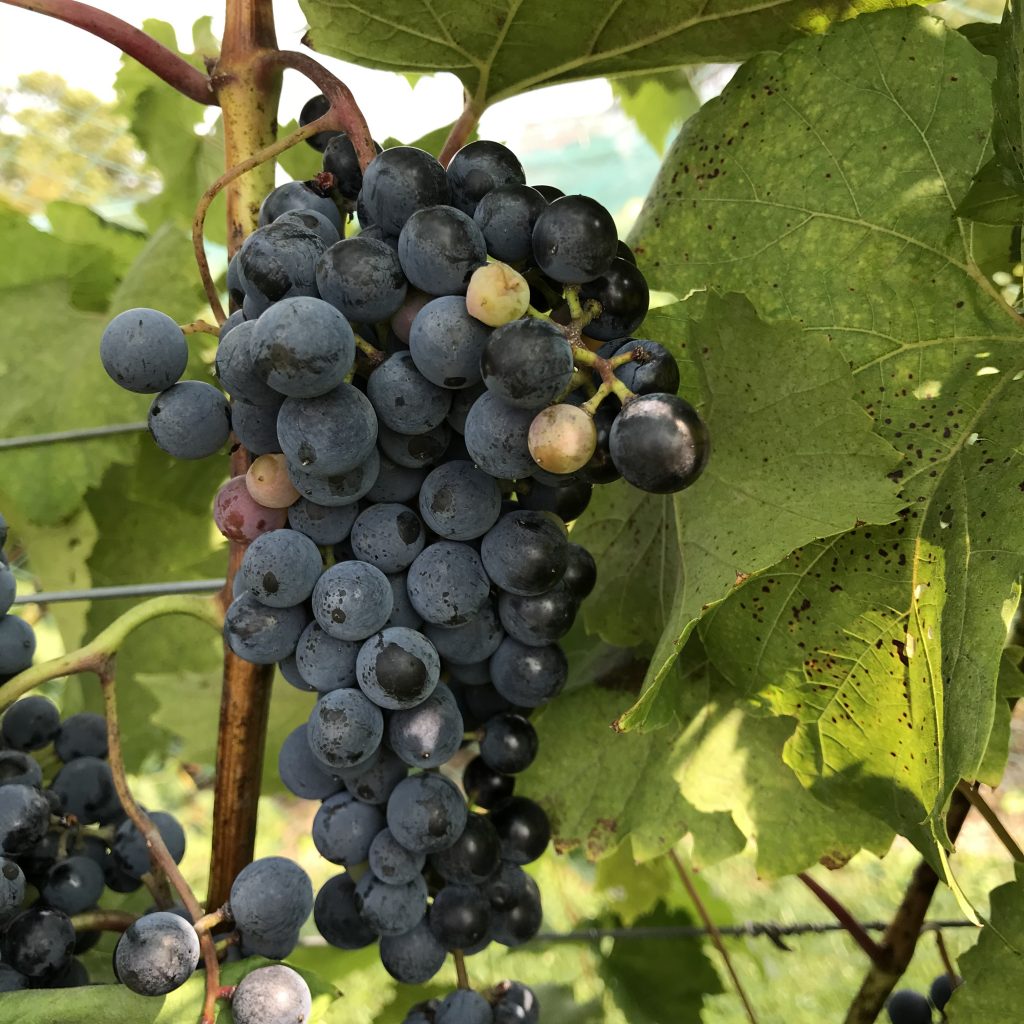
Frontenac 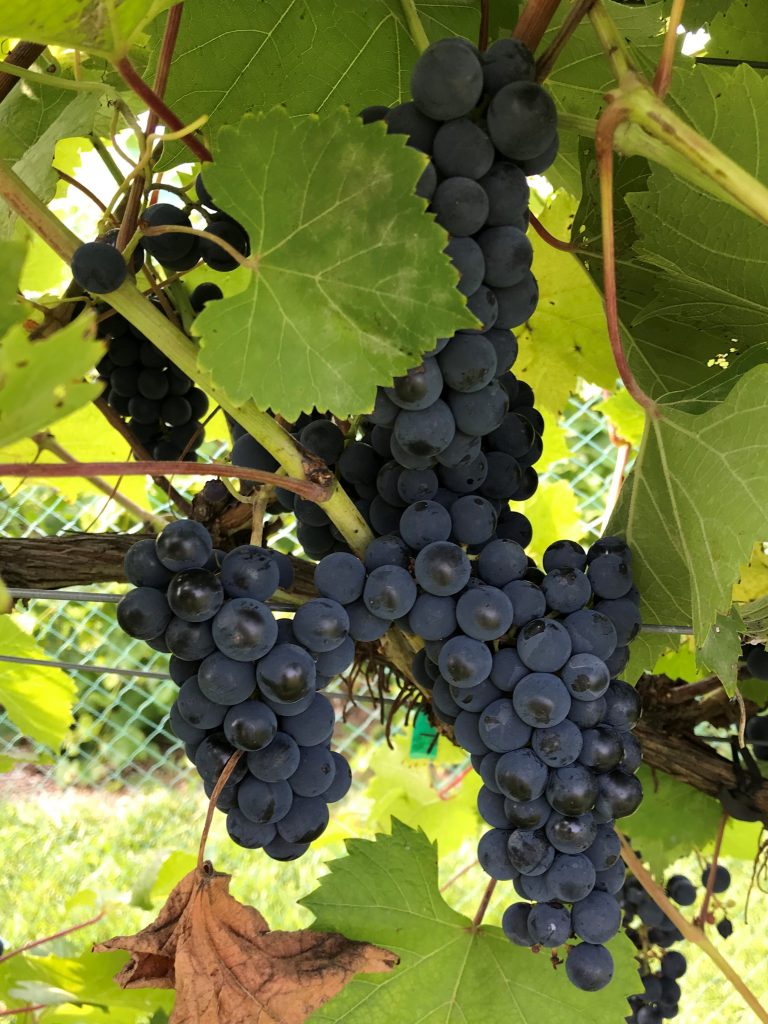
Marquette 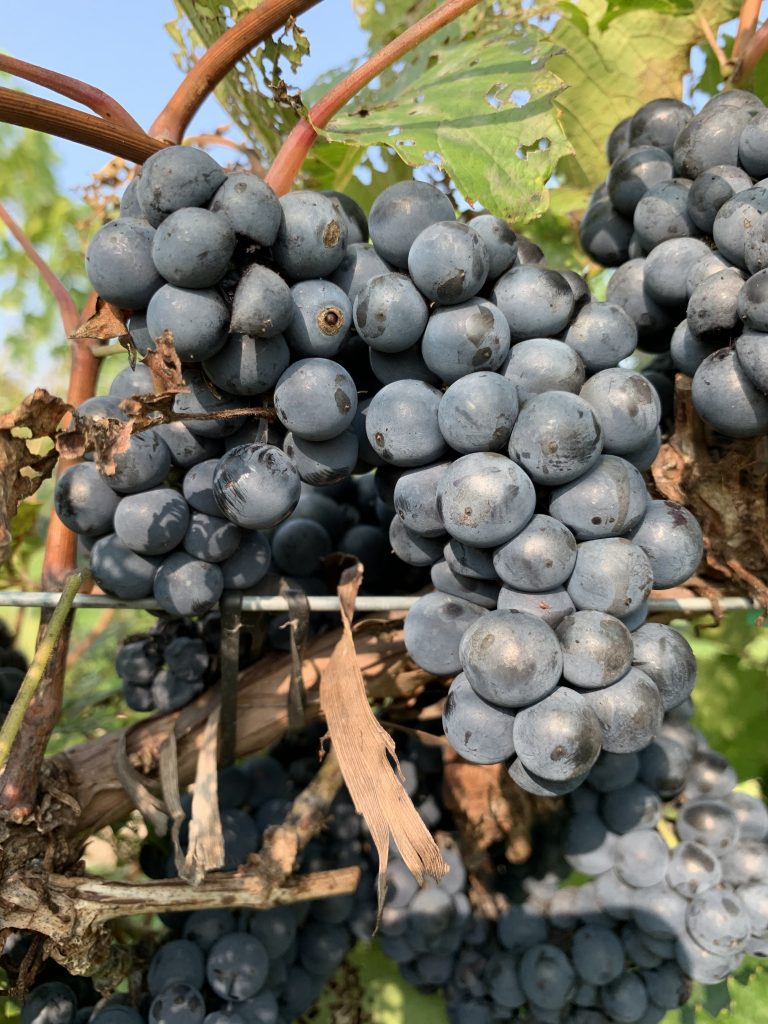
Petite Pearl
Fruit Ripening Metrics
Continuing until harvest, we will report the fruit ripening chemistry metrics for the cultivars at WMARS, measures that are typically used to gauge timing of harvest for cold climate grapes: total soluble solids (TSS; sugars, primarily; measured in Brix %), titratable acidity (TA, measured as tartaric acid equivalents in g/L), and pH. We measure sugars using a digital refractometer (Model HI96801, Hanna Instruments) and the TA and pH using an automatic titration system (Model HI902c, Hanna Instruments). Each value reported here is an average from pooled berry samples (about 45 berries in each, taken from both sides of the canopy) collected from panels of four vines located in two different parts of the vineyard. Crimson Pearl and Petite Pearl berry samples were collected from single vines in their respective panels because the other vines are being used for a research study.
Current measurements were taken on September 15 (Table 1), except for La Crescent, which was taken on September 8. Among the red cultivars, Marquette (21.6 Brix %) has the highest TSS. The only remaining white cultivar, La Crescent, was at 21.1 Brix %). Crimson Pearl and Petite Pearl both continue to have the lowest sugars (14.0 and 16.4 Brix %, respectively) of the reds. The overall drop in TSS levels (except for Petite Pearl) over the last week is likely due to dilution due to the uptake of water after recent precipitation (Figure 1).
Acidity levels have continued to decrease in the red cultivars, although Petite Pearl values have remained steady (Figure 2). Crimson Pearl and Petite Pearl have the lowest acidity levels, below 9 g/L, while Frontenac has the highest value at 16.2 g/L. Just before its harvest, La Crescent TA values remained high at 16.8 g/L. The pH values for all remaining cultivars as of September 15 were between 3.2 to 3.4(Table 1, Figure 3).
Table 1. Fruit ripening chemistry metrics of sugars, titratable acidity (TA), and pH, for cold climate grape cultivars grown at the West Madison Agricultural Research Station (WMARS). Current berry samples were collected and analyzed on September 15.
| Cultivar | Brix (%) | TA (g/L) | pH |
| Crimson Pearl | 14.0 | 6.6 | 3.4 |
| Frontenac | 18.5 | 16.2 | 3.2 |
| La Crescent* | 21.1 | 16.8 | 3.2 |
| Marquette | 21.6 | 12.0 | 3.2 |
| Petite Pearl | 16.4 | 8.2 | 3.4 |
*Analysis September 8, harvested September 11.
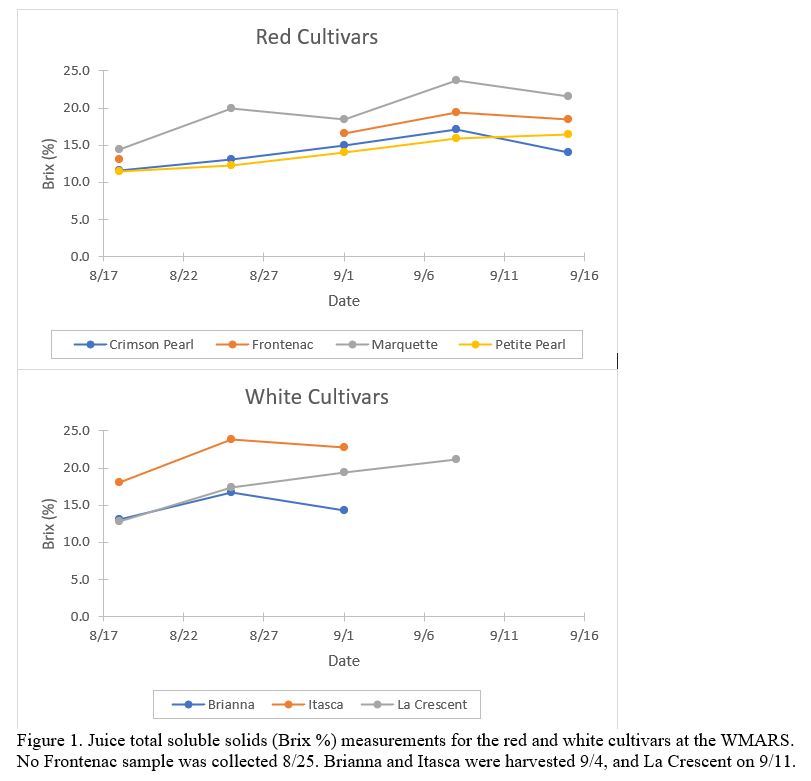
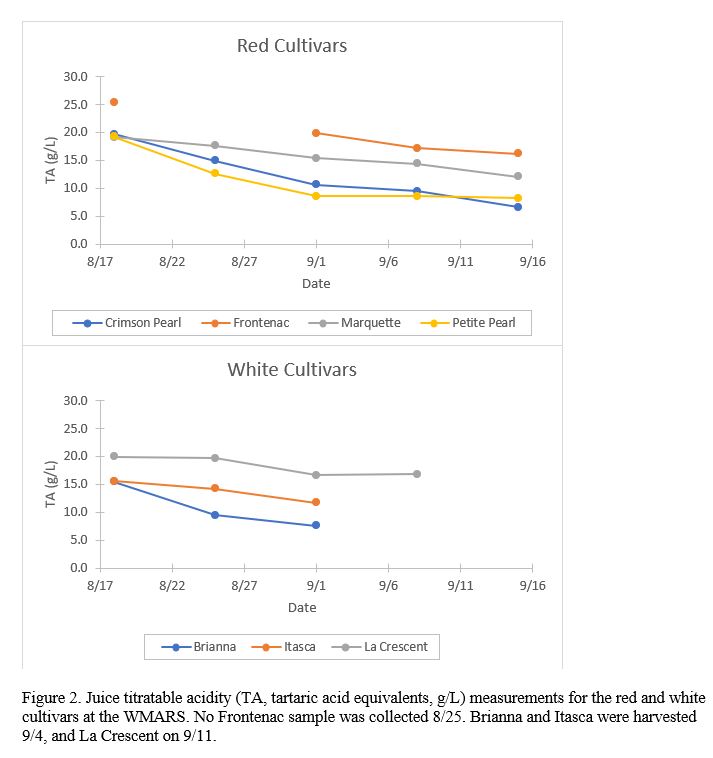
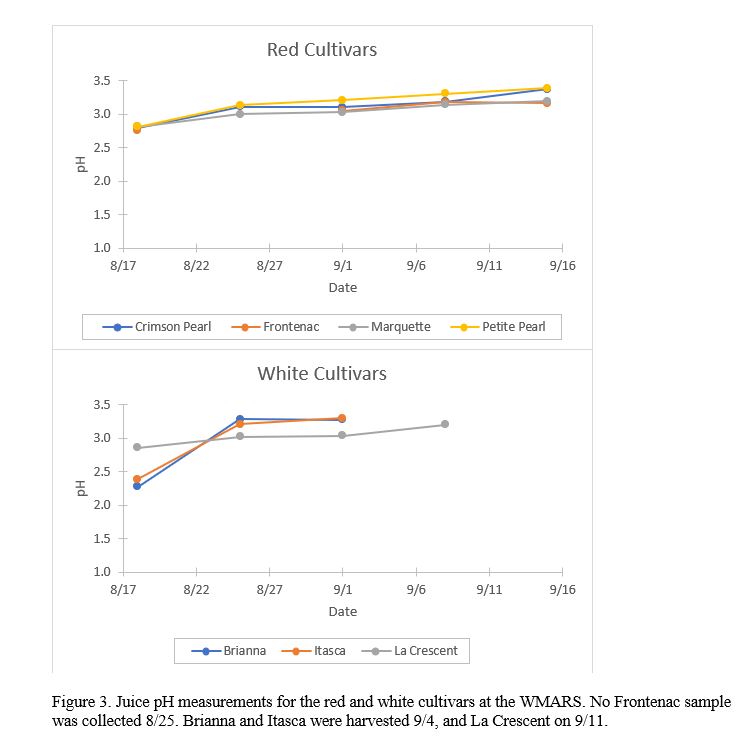
Growing Degree Day (GDD) Accumulations
Depicted in Table 2 and on the graph in Figure 4 are the GDD accumulations from April 1 through September 15 for this season and the past two seasons at the WMARS and the Peninsular Agricultural Research Station (PARS). Currently at both locations, the GDD accumulations for the past two weeks have been less than over the prior two weeks. As a result, the total 2020 heat experience at WMARS is more similar to that of 2019, while the temperature experience at PARS has dropped lower than that for 2018.
We use the NEWA website as our source for GDD data. You can visit their “About degree days” page to learn more about the concept of degree days and the formulas used in calculations.
Table 2. Growing degree day accumulation as of September 15, 2020 (April 1 biofix date; base 50 °F BE*) at the West Madison Agricultural Research Station (WMARS) and the Peninsular Agricultural Research Station (PARS).
| Location | 2020 | 2019 | 2018 |
| WMARS | 2451.5 | 2343.2 | 2690.7 |
| PARS | 2002.4 | 1728.0 | 2126.0 |
*BE = Baskerville-Emin calculation method
